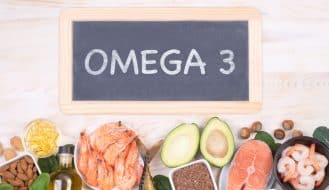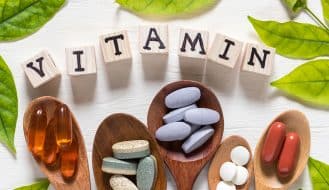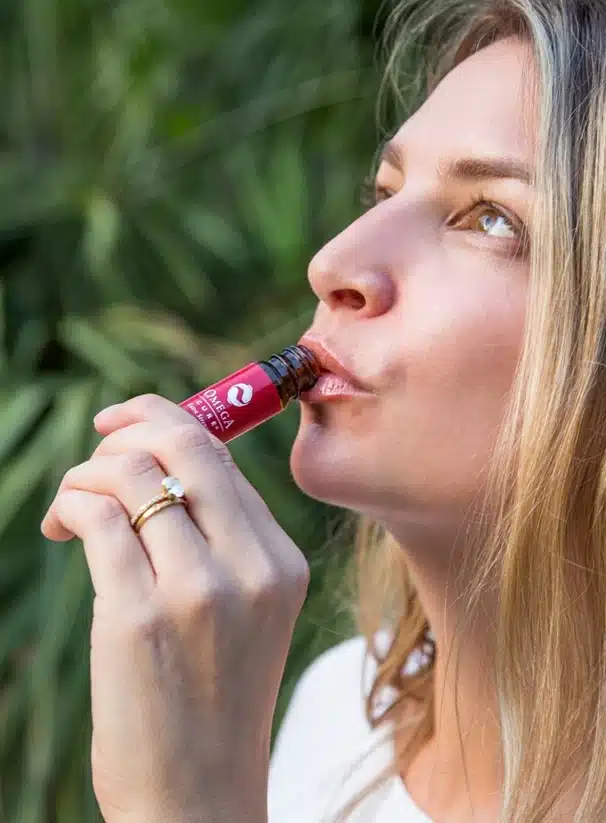Wild Salmon vs Farmed Salmon: Which is Better For Your Health?
Salmon is widely praised as one of the healthiest fish you can eat. It’s packed with high-quality protein, omega-3 fatty acids, and essential vitamins like B12, D, and selenium.
Omega-3s—particularly EPA and DHA—play a crucial role in brain function, reducing inflammation, and supporting heart health. But when you’re standing in the seafood aisle or ordering from a restaurant menu, you might wonder: is wild salmon or farmed salmon the better choice?
Both types of salmon offer health benefits, but their nutritional value, contaminants, taste, and environmental impact can vary significantly. We’ll break down the key differences between wild vs. farmed salmon—where they come from, how they’re raised, their nutritional content, and what to consider when making your choice. By the end, you’ll have a clear understanding of which type of salmon best suits your goals and lifestyle.
Where Does Your Salmon Come From?
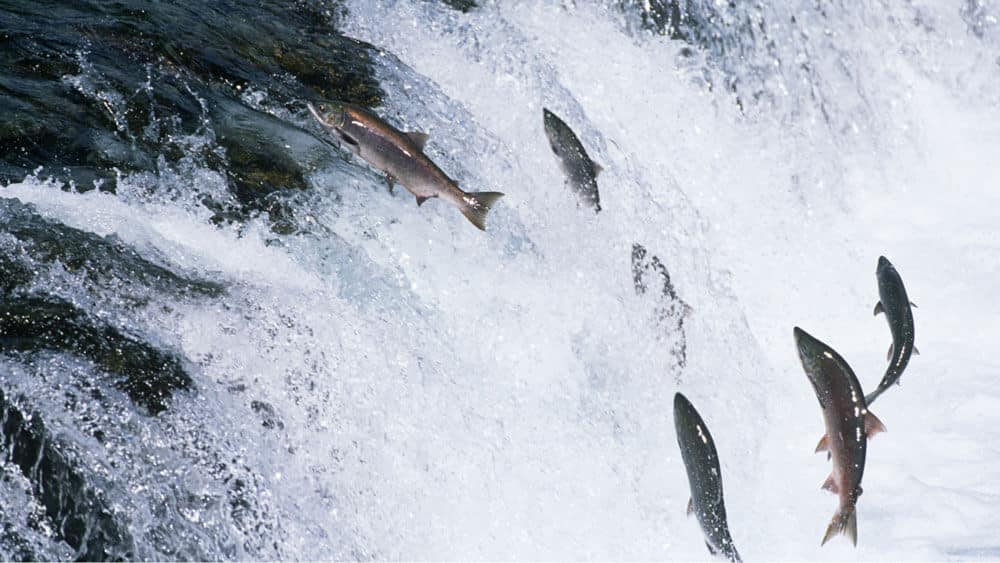
One of the easiest ways to determine whether your salmon is wild or farmed is by looking at its species. If you’re eating Atlantic salmon, it’s farm-raised. All Atlantic salmon sold in the U.S. comes from aquaculture operations (1) There is no commercial fishing for wild Atlantic salmon due to population declines.
Wild-caught salmon typically comes from the Pacific Ocean (2) and includes five main species:
- Chinook (King) Salmon: The largest and richest in fat, known for its buttery texture and high omega-3 content.
- Sockeye Salmon: Deep red in color with a firm texture and strong, distinctive flavor. This is the most commonly available wild-caught salmon.
- Coho (Silver) Salmon: Milder in taste than sockeye, with a good balance of flavor and fat content.
- Pink Salmon: Light in color and delicate in taste, often used for canned salmon.
- Chum Salmon: Lower in fat, typically used for smoking or pet food, though some varieties are sold fresh or frozen.
Farmed salmon are raised in aquaculture facilities, typically in ocean net pens, freshwater tanks, or land-based recirculating systems. The goal of these controlled environments is to ensure consistent availability year-round. However, the quality of farmed salmon depends entirely on their diet and farming conditions (3), which can impact their nutritional value and safety.
Wild salmon populations grow and mature in their natural habitats—oceans, rivers, and lakes—where they swim freely and feed on a natural diet of small fish, plankton, and krill. This natural diet is what gives wild salmon its deep red-orange color and robust nutritional profile.
Because wild salmon are more active than farmed fish, they tend to be leaner and firmer in texture, with a more pronounced flavor.
What is the Difference Between Wild-Caught and Farm-Raised Salmon?
| Category | Wild-Caught Salmon | Farm-Raised Salmon |
| Nutritional Value | Richer in high-quality protein | Higher in total fat |
| Taste & Texture | Firmer, leaner, and more flavorful due to a natural diet and active lifestyle | Softer, richer, and milder due to higher fat content |
| Contaminants | Higher levels of pollutants, but still considered safe | Lower levels of pollutants thanks to changes in feed and regulation |
| Additives | None—naturally colored from an astaxanthin-rich diet | Often given color additives (synthetic astaxanthin) and sometimes antibiotics |
| Environmental Impact | Overfishing and habitat degradation are concerns, but sustainable fisheries (MSC-certified) help | Pollution, disease spread, and antibiotic use are concerns, but sustainable farms (ASC-certified) are improving practices |
| Cost | More expensive (~$20-$30 per pound) | More affordable (~$8-$12 per pound) |
| Availability | Seasonal and varies by species | Available year-round with consistent size and supply |
For the cleanest, most nutrient-dense option, wild-caught salmon is the best choice. For a budget-friendly alternative, opt for sustainably farmed salmon.
The biggest difference between farmed and wild fish comes down to how they live, what they eat, and how that affects their nutritional value. While both types of salmon provide high-quality protein and omega-3 fatty acids, their environments and diets create noticeable distinctions in nutritional content, taste, and potential contaminants.
Nutritional Value
Both wild and farmed salmon are good sources of protein, omega-3 fatty acids, and essential vitamins and minerals. However, their nutritional profiles differ due to their diets and lifestyles.
Wild salmon eat a natural diet of smaller fish and plankton, so they tend to be leaner and richer in certain minerals and omega-3s. Farmed salmon, on the other hand, have less room to move and are fed a mix of fishmeal, vegetable oils and grains. That’s why farmed salmon have a higher overall fat content, but fewer beneficial omegas.
Protein Content: Wild Salmon Wins on Lean Protein
Protein is crucial for muscle repair, immune function, and overall health. Wild salmon tends to deliver more protein per serving (3). It usually has less fat and more muscle mass due to its active lifestyle. This difference is relatively small but can be significant for those looking to optimize their protein intake while keeping fat consumption in check.
Fat Content: Farmed Salmon is Higher in Fat (But Not the Best Kind)
Over the last 30 years, the feed given to farmed salmon has radically changed. In the 1990s, farmed salmon were usually fed on fishmeal and fish oil to reflect their natural diet in the wild. Startings in the 2000s, the cost of fishmeal and fish oil substantially increased. This led the aquaculture industry to switch to plant substitutes, like grains and soybean oil, to save money (3).
To get a sense of just how much has changed, consider: In 1990, Norwegian farmed salmon got about 65% of their diet from marine protein sources. By 2016, that number dropped to 14.5%. At the same time, the amount of vegetable oils in the feed increased from 0% in 1990 to 20% by 2016 (3).
This dietary shift has led to farmed salmon becoming fatter and having a completely different fat profile than before. Compared to wild salmon, farmed salmon contains more saturated fat, as well as more pro-inflammatory omega-6s.
Proportionally, farmed salmon also contain about 30% less of the heart-healthy omega-3s than their wild counterparts (3). In fact, a 2016 study found that omega-3 levels in farmed salmon have dropped by 50% over the past decade, due to changes in fish feed (4).
Omega-3 Fatty Acids: Quality Over Quantity
Omega-3 fatty acids— EPA (eicosapentaenoic acid) and DHA (docosahexaenoic acid) —are among the most important nutrients in salmon. These healthy fats support brain function, reduce inflammation, and improve heart health (5).
If you analyze the overall fat composition, farmed salmon contains about 30% less omega-3s than wild salmon. Farmed salmon also contain significantly more omega-6s. As a result, farmed fish end up having a higher omega-6 to omega-3 ratio.
Why Does This Matter?
A higher ratio of omega-6 to omega-3 fatty acids has been linked to many health issues, including obesity and increased inflammation (6). Because farmed salmon contains a higher omega-6 to omega-3 ratio, they have less anti-inflammatory benefits than wild salmon.
This isn’t to say that farmed salmon doesn’t have value in the omega-3 department. Because farmed salmon contains more total fat per serving, a portion of farmed salmon might still deliver an equal amount of EPA and DHA as wild salmon. However, the balance of the fats will be less beneficial.
Taste and Texture
While both varieties have their own appeal when it comes to taste, wild salmon tends to be firmer and more flavorful. Farmed salmon is usually richer, milder, and softer due to its higher fat content.
Wild salmon spend their lives swimming long distances in cold, fast-moving waters, constantly working their muscles. As a result, their flesh is leaner and firmer, with a more dense, meaty texture.
Because wild salmon feeds on a natural diet of plankton, krill, and smaller fish, it develops a robust, complex flavor that is often described as richer and more intense compared to farmed salmon, and is sometimes described as more “ocean-like” due to its natural environment.
Additionally, wild salmon has a vibrant red-orange color, thanks to higher levels of astaxanthin, a powerful antioxidant found in its natural diet (7). This deep color is completely natural, unlike farmed salmon, which often needs color additives to mimic the same hue.
Since farmed Atlantic salmon is fed a controlled diet with less omega-3s, its flavor is milder and less “fishy” than wild salmon. Its natural color is also much lighter—almost grayish-white. To achieve the familiar pink hue, fish farmers often add astaxanthin supplements to their diet, mimicking the effects of a wild salmon’s natural diet.
Contaminants and Additives
Both wild and farmed salmon live in environments that expose them to industrial pollutants, heavy metals, and chemicals. Early studies showed that farmed Atlantic salmon had high levels of dioxins and PCBs compared to wild salmon (8). This was concerning, since these chemicals have been linked to higher rates of cancer, hormone disruption, and developmental issues (9).
Thanks to feed changes and increased regulation, contaminants in farmed salmon have dropped significantly (10). Recent studies show that farmed salmon now has lower levels of these toxins, as well as mercury, than wild salmon (3, 11).
Overall, the levels of pollutants in farmed and wild salmon are considered relatively low. In fact, both are considered safe foods to eat in moderation (12).
Antibiotic Use
Another concern with farmed salmon is antibiotic use. Because salmon raised in crowded net pens are more susceptible to disease and parasites, many fish farms treat their salmon with antibiotics to prevent infections.
Excessive antibiotic use in fish farming raises concerns about antibiotic resistance, which can impact human health. While the U.S. and some European countries have stricter regulations, some salmon-producing countries still use antibiotics that are banned in the U.S. and Canada.
Color Additives
One of the most noticeable differences between wild and farmed salmon is color. Wild salmon get their deep red-orange hue naturally from eating krill and plankton, which contain high levels of astaxanthin, a powerful antioxidant.
Farmed salmon, on the other hand, would be grayish-white without artificial astaxanthin supplements added to their feed (13). While this synthetic or algae-derived astaxanthin is not harmful, it’s still worth noting that the color of farmed salmon is not naturally occurring.
Environmental Impact
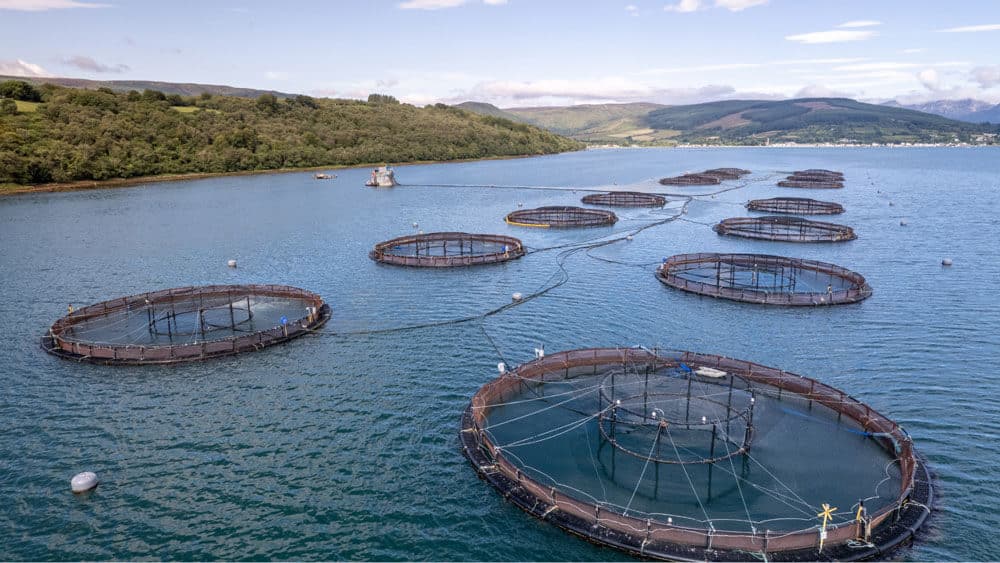
Both farmed and wild salmon have sustainability challenges, from overfishing and habitat destruction to pollution and disease risks in aquaculture. Understanding these issues can help you make an informed choice that aligns with both your health and environmental values.
Decades of commercial fishing have put pressure on both Atlantic and Pacific salmon populations. While some fisheries are well-managed, others still operate without strict sustainability practices, leading to population declines. However, many efforts are in place to make wild salmon harvesting more sustainable. Organizations like the Marine Stewardship Council (MSC) certify fisheries that follow responsible fishing practices. Choosing MSC-certified wild salmon ensures that the fish comes from a well-managed, sustainable source.
Farmed salmon helps meet global demand and reduces pressure on wild populations—but it comes with its own environmental costs. Most farmed salmon are raised in open net pens in the ocean, where their waste, uneaten food, and chemicals (such as antibiotics) pollute surrounding waters. This can cause dead zones and disrupt local ecosystems (1). If you choose to purchase from salmon farms, look for Aquaculture Stewardship Council (ASC) or Best Aquaculture Practices (BAP) certifications, which indicate responsible farming practices.
Cost and Availability
One of the biggest differences between wild and farmed salmon is price and year-round availability. If you’ve ever compared the two at the grocery store, you’ve likely noticed that wild-caught salmon is significantly more expensive—but why?
Farmed salmon is produced in controlled environments, allowing for consistent supply and lower costs. Since it’s raised year-round, it’s easier to find in grocery stores and restaurants at a more affordable price.
Wild salmon is only available during certain fishing seasons, which means supply is limited. Because it’s harder to catch and in higher demand, it often costs 2-3 times more than farmed salmon fillets.
How to Tell if Salmon is Wild-Caught or Farm-Raised
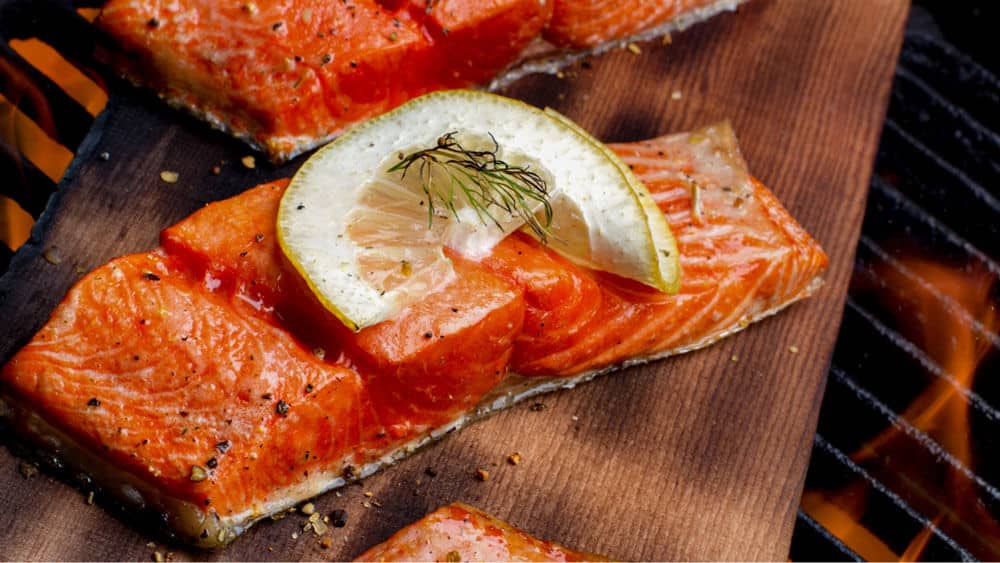
If you’re buying salmon at the grocery store or ordering it at a restaurant, it’s helpful to know whether it’s wild or farmed—especially since labels can sometimes be misleading. Here are the easiest ways to tell the difference:
- Look at the Color: One of the most noticeable differences between wild and farmed salmon is color. If you see a paler pink filet, it’s likely farmed. If the color is a deep, vibrant red, it’s likely wild.
- Check the Label: Most salmon will be clearly labeled as “wild-caught” or “farm-raised.” When in doubt, check for certifications.
- Know the Species: Atlantic Salmon is always farmed in the U.S. Pacific Salmon is typically wild-caught, unless specifically labeled as farmed.
What is the Healthiest Type of Salmon to Eat?
If nutrition, purity, and sustainability are your top concerns, wild-caught salmon is your best bet. But if wild salmon isn’t accessible or affordable, high-quality farmed salmon can still be a good option. And don’t forget— salmon isn’t your only choice when it comes to omega-3s. Adding herring, mackerel, sardines, and other oily fish to your diet can help you reap the same benefits.
Lastly, if you struggle to eat enough seafood, adding a high-quality omega-3 supplement can bridge the nutritional gap. For example, Omega Cure® Extra Strength contains the same full-spectrum fat profile you find in wild caught fish. And since it is super fresh, it has a great taste, just like the best quality fish you can order in a restaurant.
- 1. Sustainable salmon guide. Seafoodwatch.org. Published 2023. https://www.seafoodwatch.org/recommendations/download-consumer-guides/sustainable-salmon-guide
- 2. Fish Faceoff: Wild Salmon vs. Farmed Salmon. Cleveland Clinic. Published February 17, 2022. https://health.clevelandclinic.org/fish-faceoff-wild-salmon-vs-farmed-salmon
- 3. Jensen IJ, Eilertsen KE, Otnæs CHA, Mæhre HK, Elvevoll EO. An Update on the Content of Fatty Acids, Dioxins, PCBs and Heavy Metals in Farmed, Escaped and Wild Atlantic Salmon (Salmo salar L.) in Norway. Foods. 2020;9(12):1901. doi:https://doi.org/10.3390/foods9121901
- 4. Ghosh P. Omega-3 Oils in Farmed Salmon “Halve in Five Years.” BBC News. https://www.bbc.com/news/science-environment-37321656. Published October 6, 2016.
- 5. NIH. Office of Dietary Supplements – Omega-3 Fatty Acids. Nih.gov. Published February 15, 2023. https://ods.od.nih.gov/factsheets/Omega3FattyAcids-HealthProfessional/
- 6. DiNicolantonio JJ, O’Keefe J. The Importance of Maintaining a Low Omega-6/Omega-3 Ratio for Reducing the Risk of Autoimmune Diseases, Asthma, and Allergies. Missouri Medicine. 2021;118(5):453. https://pmc.ncbi.nlm.nih.gov/articles/PMC8504498/
- 7. Thompson T. What Makes King Salmon Flesh Red or White? Alaska Department of Fish and Game. Published September 2015. https://www.adfg.alaska.gov/index.cfm?adfg=wildlifenews.view_article&articles_id=738
- 8. Foran JA, Carpenter DO, Hamilton MC, Knuth BA, Schwager SJ. Risk-Based Consumption Advice for Farmed Atlantic and Wild Pacific Salmon Contaminated with Dioxins and Dioxin-like Compounds. Environmental Health Perspectives. 2005;113(5):552-556. doi:https://doi.org/10.1289/ehp.7626
- 9. Ross G. The Public Health Implications of Polychlorinated Biphenyls (PCBs) in the Environment. Ecotoxicology and Environmental Safety. 2004;59(3):275-291. doi:https://doi.org/10.1016/j.ecoenv.2004.06.003
- 10. Deshayes, PH. Norway Says Farmed Salmon Safe and Urges Public to Eat More. PhysOrg. Published December 15, 2014. https://phys.org/news/2014-12-norway-farmed-salmon-safe-urges.html
- 11. Lundebye AK, Lock EJ, Rasinger JD, et al. Lower Levels of Persistent Organic Pollutants, Metals and the Marine Omega 3-Fatty Acid DHA in Farmed Compared to Wild Atlantic Salmon (Salmo salar). Environmental Research. 2017;155:49-59. doi:10.1016/j.envres.2017.01.026
- 12. Farmed Salmon vs. Wild Salmon. Washington State Department of Health. https://doh.wa.gov/community-and-environment/food/fish/farmed-salmon
- 13. Godinez S. Something Fishy About It: Where Does Your Salmon Come From? iupressbookspub. https://iu.pressbooks.pub/foodfiberfashionfa20/chapter/where-does-your-salmon-come-from/
Popular posts
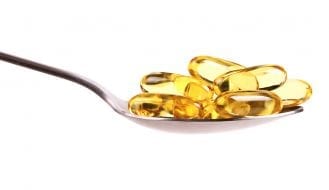

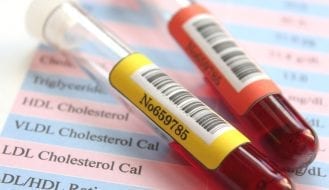
Related posts
